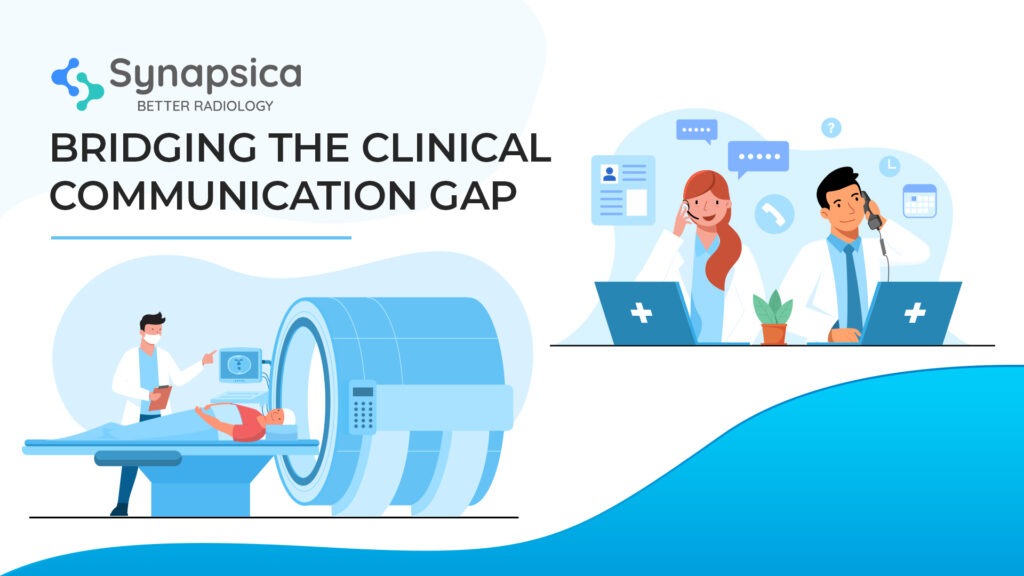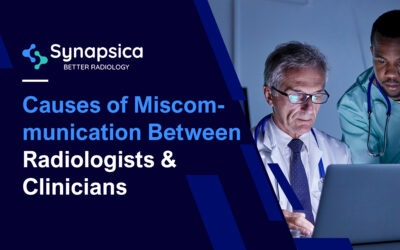
Clinical communication gap is costing healthcare institutions dearly.
In a study conducted by medical safety experts from CRICO strategies, researchers found that over 7000 of 23000 medical malpractice lawsuits could be associated with communication failures resulting in $1.7 billion in malpractice costs and nearly 2,000 preventable deaths.
Nearly 80% of critical medical errors were the outcome of miscommunication between caregivers/healthcare professionals during patient handovers, according to a study conducted by Joint Commission.
Miscommunication/communication gaps can plague businesses regardless of the industry. While for some industries like retail, the impact of poor communication is felt only at the level of revenue, for industries like healthcare, the repercussions of the communication gap are vexing for both providers and people, as lives are at stake.
Suggested read→ Causes of Miscommunication Between Radiologists and Clinicians
Despite the advancements in technology, the healthcare industry is still struggling with communication gaps. In this article, let’s see how some simple steps can promptly shrink the fast widening communication in healthcare institutions.
1. Implement quantitative analysis and objective reports
Radiology reports are not just documents that record the findings of a radiologist. It is more than that. Radiology reports play a major role in medical claims, defending malpractice suits, and above all, they are one of the basic and important modes of communication between radiologists and clinicians. Even trivial details recorded in reports can alter the course of treatment and patient care. This is why it is paramount for radiologists as well as healthcare institutions to generate reports in a coherent, comprehensible, and objective manner.
Subjective reporting, which is the current way of reporting in radiology, has been the primary reason for the increased incidence of incorrect and delayed treatments in the healthcare industry. Subjective radiology reports have also been the major contributor to the fast-widening communication gap.
For instance, when a person is diagnosed with spinal stenosis, the radiologist subjectively records the finding, quoting ‘mild stenosis’. But what may seem mild to one radiologist might seem moderate to another, ultimately resulting in inter-observer variability and diagnostic errors. This eventually leads to incorrect/poor treatment plans which can even result in irreversible damage.
“Numbers speak louder than words”
Objective reporting for the same condition (spinal stenosis, AP diameter – 9 mm, severity – mild) will hold quantitative metrics and value that will facilitate clear communication between radiologists and physicians and enable them to choose the appropriate course of surgery/treatment.
Replacing subjective analysis and reporting with quantitative analysis and objective reporting will not only reduce diagnostic errors and interobserver variability but will also improve the clinical value of reports and facilitate optimal patient care.
2. Centralized electronic health records
Easy access to information is still a challenge for both patients and physicians. Seamless workflow and better patient care are possible only when physicians can access critical information easily and quickly. Establishing a centralized patient record system along with the required safety protocol (say single sign-on) will allow healthcare workers to access and share patient records safely and quickly.
3. Establish mobile-first communication
It is easier to communicate than to commute in today’s technology-driven world. Healthcare is one of the few industries that has greatly benefited from technology innovations in communication. Today, physicians and radiologists can connect with patients and other healthcare workers from any corner of the world, be it day or night. But they are still stuck to their desktops and laptops to read images and reports, which can again lead to delayed response.
Healthcare workers are upgrading their communication channels in today’s mobile-first world. Internet-based text and voice messaging services like WhatsApp and Facetime are replacing pagers today.
As patient care is a collective effort and healthcare is a time-sensitive environment, healthcare institutions should consider mobile-first communication that is more secure and efficient than free internet-based messaging applications like WhatsApp.
Use health applications that benefit your workflow and ease clinical communication between healthcare professionals.
4. AI applications to improve interpersonal communication
Instead of using free internet-based messaging apps like WhatsApp, physicians can opt for AI tools or applications that can ease interprofessional communication among physicians and also notify them about the criticality of a patient’s condition. For example, PACS – an age-long medical imaging technology and a great source of patient information, is becoming more sophisticated with the advent of AI.
AI-driven PACS are making interprofessional communication more effective for healthcare workers compared to internet-based messaging tools. With AI-powered PACS, radiologists and physicians can easily and securely share patient information with high-quality scan images, even from their mobile devices.
RADIOLens, for instance, is an AI-powered PACS solution that highlights priority cases and allows doctors to access operations dashboards from anywhere and open cases from mobile devices. With RADIOLens, physicians can get live notifications about the patient’s condition with high-quality images and respond on the go.
Summing up
Communication is the key – not just for improving business but also for providing better patient care. Hence, healthcare providers must ensure that their staff can connect and respond effectively. With the technology advancements in today’s internet era, healthcare institutions, small and large, can build befitting hospital communication systems that will help in establishing a unified and engaged workforce, which is paramount for better patient care and avoiding malpractice lawsuits.
To overcome the dreadful effects of communication gaps/miscommunication, numerous health systems, and health tech firms are currently investing in building tools/software that will improve interprofessional communication among healthcare professionals and thereby patient care.
For instance, modern-day PACS, built on AI, are developed not to just facilitate easy and efficient image sharing but also to improve communication among healthcare professionals, automatically sort images, optimize workflows, etc.
One such AI-powered PACS software that is becoming increasingly popular among healthcare professionals is RADIOLens. With 500+ installations across 15+ countries, RADIOLens has proved to improve clinical collaboration, reporting speed and accuracy, workflow efficiency, and decision making.
To know more about RADIOLens, click on the image below.

